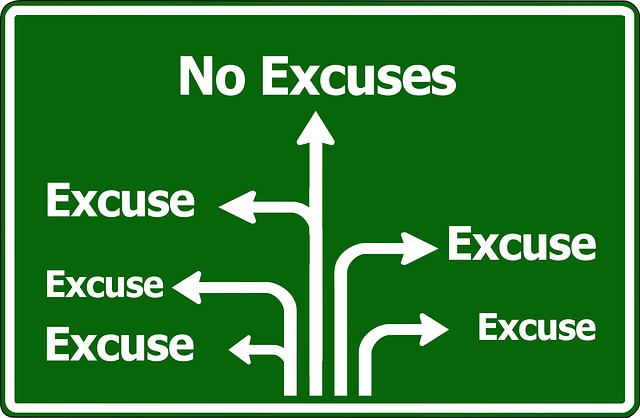“No Excuse” Ways to Get Sales Enablement Done
- Taking a “no excuse” approach means finding a way to succeed no matter what the circumstances
- Limited resources are a reality for sales enablement teams, so find ways to make an impact within those limitations
- There are “no excuse” opportunities can be found today in training, sales content and overall rep effectiveness
Adjusting to life at West Point wasn’t easy for me. As a new cadet in summer boot camp, I had an explanation for everything I did wrong, whether it was too little time, the weather or a teammate I felt was letting me down. But with every excuse, I only drew more unwanted attention to myself.

Then a lightbulb went off when I realized the value of the “no excuse.” As a freshman, you’re only allowed to respond in one of four ways to an upperclassman – “Yes,” “No,” “I do not understand” and the most important – “No excuse.” No matter how badly you screwed up, when you’re asked why it happened, the only answer you can give is “No excuse.”
“No excuse” means ownership. It means no matter what the circumstances are, there’s no excuse for not accomplishing the work. This mentality has helped get things done in less than ideal circumstances as an officer, as a sales rep and as a leader of sales enablement initiatives. As an analyst at SiriusDecisions, I see organizations of every size face execution challenges for various reasons. Some of the most common reasons are limited budgets, limited authority and a lack of support from other roles in the organization. But that’s no excuse for not getting SOMETHING done. So here are a few “no excuse” initiatives you can do with limited resources:
- Define competencies. Many companies focus on “time to revenue” when they hire a sales rep. They believe that if new reps take an increasingly short amount of time to produce sufficient revenue in their territory, their onboarding must be a success. In reality, multiple factors drive revenue for a company – product development cycles, marketing campaign efforts and external market forces all play a role. Instead of exclusively focusing on revenue, take the time to define what great sales reps look like. How do they behave? What should they know? What day-to-day tasks do they have to be certified on before you’d consider them effective? The knowledge, skills and process expertise that a rep or manager needs to possess to succeed represent the competencies you need to hire or train for during onboarding. Beyond observation and interviews, not a lot of budget is required to figure this out, yet it’s foundational to everything a good sales enablement function does. Every sales role should have a set of competencies that define what is needed to successfully execute.
- Collaborate on the hiring and recruiting process. By collaborating with sales leaders and human resources on the hiring process, enablement can make a big impact without stretching the budget. Human resources is often overwhelmed by the amount and types of positions they have to recruit – especially for the sales organization. By providing further guidance on who should be hired, you’ll target better candidates from the start. Better candidates mean onboarding and ongoing training investment can be less significant up front. Use the competencies defined for each role to develop interview questions and a refined hiring process.
- Re-map your sales assets. So your budget is tight and you can’t pull the trigger on a sales asset management solution yet. The good news: When you’re ready, there are several solutions with robust, innovative capabilities. But technology won’t automatically solve findability and usability issues. That ultimately relies on process. Map existing content to a buyer’s journey and sales process. Interview sales reps and your best customers to see what content resonates. Nothing’s stopping you from organizing and tagging content without a sales asset management solution in place. It might mean using Excel and embedding metadata into current documents instead of an advanced mobile solution, but it’s the vision and strategy that counts. All of this work can be used to justify a purchase down the road.
- Optimize sales activities. One goal of sales enablement is a more productive sales rep who is more efficient at delivering messaging, more effective at selling and consistently better at performing day-to-day activities. Take the time to understand reps’ day-to-day activities. Are they in too many meetings? Is the prospecting process inefficient? Do they click through 10 screens in their sales force automation system when it can be done in two? Observe and map the activities of various sales reps – from the worst to the best – to understand what winning reps do differently. Look for quick wins where you can streamline reps’ daily activities so they can focus on core selling activities.
Most of these initiatives take time and effort vs. a committed budget. As a leader in a relatively new space, you often have to prove the value of sales enablement before the budget arrives. Start with these “no excuse” ideas, and see where they take you.